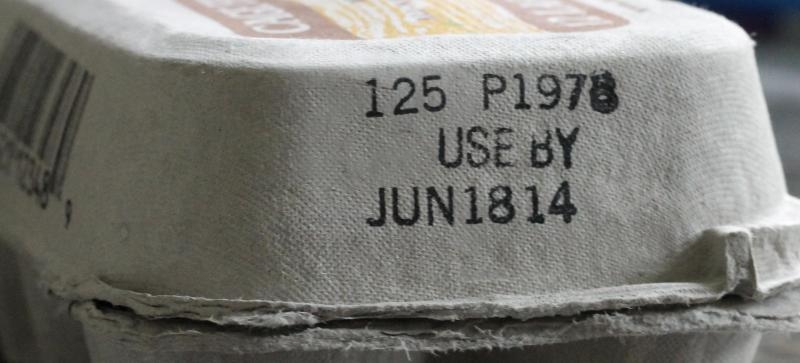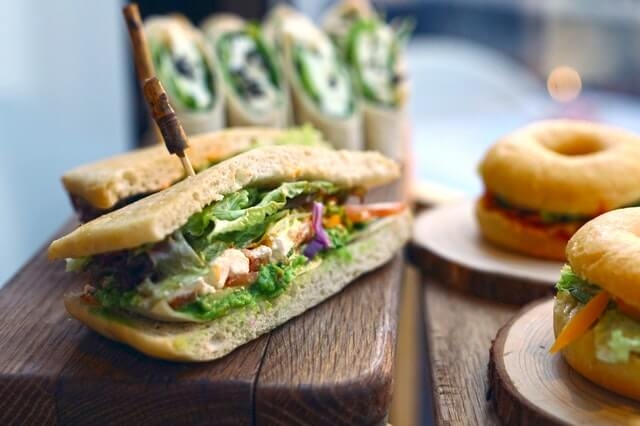
The aim of this article is to provide guidance on the Calorie Labelling (Out of Home Sector) (England) Regulations 2021, coming into force on the 6 April 2022. We will address how this legislation will affect businesses, and the key requirements organisations need to understand to comply with the new calorie labelling regulations.
Public Health England report that tackling obesity is everyone’s responsibility and that there is not one easy solution to tackle obesity. However, by introducing the new legislation, the Government aims that this will enable families and individuals to help make healthier choices when it comes to purchasing food and drink served outside the home whether it be on or off the businesses premise.
Calorie Labelling Regulations | Key Infomation
The new legislation applies to large businesses in England only which are defined as having 250 or more employees from the first day of that financial year. The 250 employees or more includes both part-time and full-time employees. Businesses who operate as a franchise in accordance with a franchise agreement and sells foods that that are recognizable to that franchise brand then the new legislation will apply to the franchise if there are 250 or more employees across the network. Where it will not apply is if the franchise does not mandate common food on offer across the franchise network. If the franchise has a set menu which all franchises must follow, then the law will apply.
Businesses which are exempt from the legislation are:
- An Educational Institution:
- “A school.
- A 16 to 19 academy, within the meaning of section 1B of the Academies Act 2010.
- An institution within the further education sector, within the meaning of section 91(3) of the Further and Higher Education Act 1992.
- A provider of post-16 education or training-
- (a.)To which Chapter 3 of Part 8 of the Education and Inspections Act 2006 applies, and
- (b.) In respect of which funding is provided by, or under, arrangements made by the Secretary of State, a local authority or a combined authority established under section 103 of the Local Democracy, Economic Development and Construction Act 2009,
But don't include an employer who is a provider by reason only of the employer providing such education or training to its employees.
- A higher education provider within the meaning of section 83(1) of the Higher Education and Research Act 2017.
- A provider of Higher Education within the meaning of section 83(1) of the Higher Education and Research Act 2017 which is not an institution (within the meaning of that section) whether or not it is designated under section 84 of that Act.
- A canteen at a workplace which is of the purpose to provide food to employees within that workplace.
- A military establishment or criminal justice accommodation.
- A hospital or other medical institution.
- A care home or other institution providing social care.
Hospitality Sector Guidance
The new calorie labelling regulations requires the display of calorie information of non-prepacked food and drink items prepared for immediate consumption, examples of establishments where this would apply are restaurants, fast food outlets, cafes, take aways which also include if they are located within a department store, supermarket, cinema etc., bakeries, contract catering for example for events, domestic transport businesses in the UK such as trains, ferries, and many other establishments where the legislation may apply.
It also extends to foods which are sold on a website, or a mobile application which also include third party delivery apps. If the delivery service is working on behalf of a large business that falls within the scope of these Regulations, the delivery service on their website and app must comply with the calorie labelling irrespective of the number of employees they have.
Equally, if food is sold for consumption off the premises and does not require any further preparation, preparation is defined as any of the following, then the new legislation will apply:
- Peeling, hulling or washing.
- Cooking.
- Thawing frozen food.
- Heating or re-heating pre-cooked food.
Food Exemptions
There are some foods where these regulations would not apply, and these include:
- Condiments provided to the consumer for them to add to their food, however, if condiments form part of the meal served i.e., burger sauce, dressings in a salad etc., then they must be included.
- Food which is included on the menu for less than 30 consecutive days or if the food is on the menu for a total of 30 days in any calendar year.
- Drinks containing more than 1.2% by volume of alcohol.
- Food provided to patients at a hospital or other medical establishment, or to residents in a residential home or other social care establishment. No charge must be taken for these foods.
- Foods provided to an educational institution for pupils below the age of 18.
- If the consumer asks for a bespoke meal to suit their requirements that is not advertised on the businesses menu or otherwise not offered normally by the business.
- Where food is served by the armed forces to a member of the armed forces outside a military canteen.
- Where food is served on international transport, which includes train, ferry, aircraft, that is going to or from a country that is not part of the United Kingdom.
Food Sold for Consumption off the Premises that are exempt.
- Fresh fruit and vegetables if they are not added to another food. However, if someone purchases a fruit salad then the food must be calorie labelled.
- Unprocessed products such as nuts, seeds, herbs.
- Fish, meats or cheese if they are not included as an ingredient. For example, a ham sandwich would be required to have the calorie information labelled.
- Loaf of bread or baguette.
Most individuals will be used to seeing the calorie content displayed on foods that are pre-packed such as in supermarkets however, for those eating out in a restaurant, it makes it difficult to know how many calories are in the food for consumption.
Legislation Implementation
The new legislation is due to come into force on 6 April 2022 and it is important that businesses comply. Complying with your legal duties could also lead to another business benefit, a study carried out by Diabetes UK revealed that 59% of respondents informed that they were more likely to buy food from an establishment where there is calorie information present.
As a business you are legally required to display the energy content of the food in kilocalories (Kcal). There are many different variables when calculating calorie information for example, a scoop between individuals maybe different in size so with this is mind, there is a tolerance of plus or minus 20% acceptable margin of difference between the actual and declared calories.
To calculate the calorie content, it should be calculated using the conversion factors listed in Annex XIV of the Retained EU Regulation 1169/2011. The Government advise when calculating the values, it should be based on either:
- “The manufacturer’s analysis of the food.
- A calculation from the known or average values of the ingredients used.
- A calculation from generally established and accepted date (in the UK this usually refers to the McCance and Widdowson’s Composition of Foods dataset.”
When calculating the calorie information, it must be given per portion or where the food has been made for consumption by more than one person the whole food. Where food is produced for consumption by more than one person than the number of intended servings must also be displayed. Businesses must always reference the portion that the calorie information relates to.
If your business operates a buffet system/build your own meal where consumers can build their own meals, you should consider providing the calorie content for each standard portion at the counter. For example, calorie content of a portion of chips, bread, etc.
It is always good practice to ensure that you keep records of the calculation process in order that businesses can explain to the enforcement officers how they calculated their calorie information.
Displaying Key Calorie Information
Once you have the calorie information for each product on the menu, that are within the scope of the regulations, you must ensure that the information is displayed clearly and at the point of choice for the customer. The simplest way is on a menu. If you also have display cases, and online menus this information must also be displayed there too. The calorie information must also be included on children’s menus.
For some individuals, seeing the calorie content displayed on the menu maybe difficult and therefore the Regulations do allow businesses to provide customers if they specifically request for a menu without calorie information. However, the Regulations require that the calorie informed menu must always be provided first to the customer.
The Regulations also specify that there must be included on the menu, excluding children’s menus, the following statement - “Adults need around 2000Kcal a day”.
The above statement cannot be amended as it is a specific requirement of the regulations. The statement must be provided on the menu if there is no menu, then in a prominent position where it can bee seen and read by anyone purchasing the food. Where it is to be included in the menu it should be written visibly clear and, on every page, or if the menu is double-sided on both sides.
When an enforcement officer visits the premises, they will check to see if you have displayed clearly and visibly the calorie information that is required for food and drink as prescribed by the Regulations. They will also check to see if the calorie information provided meets the requirements of the Regulations and that the statement is clearly visible for both inside the premises and online including, third party delivery platforms. Finally, they will check to see if the methods used to calculate the calorie information are appropriate and liable and therefore this links back to the earlier paragraph of keeping records of how the calorie information was calculated.
Compliance with the Calorie Labelling Regulations
Businesses who do not comply with the Regulations may face themselves being served an improvement notice by the local enforcement officers. The enforcement officers do not have to go straight to an improvement notice first they do have the option to have that initial conversation and support with encouraging the business to help meet their legal obligations. If the business chooses not to act upon their advice or has a total disregard to the Regulations, then an improvement notice will be served. If an improvement notice is not complied with the business is guilty of an offence.
At present, these Regulations only apply to large businesses, however, smaller businesses are encouraged by the Government to comply on a voluntary basis. Nevertheless, within 5 years, the Government will review these Regulations to check the effectiveness of their implementation and consider whether extending them to smaller sized businesses.
To summarise, this article has discussed the new Calorie Labelling (Out of Home Sector) (England) Regulations 2021 coming into force on the 06th April 2022. The Regulations will also help businesses identify their calorie content for their meals and encourage them to provide lower calorie options for their customers.
Speak to our Health and Safety Consultancy team for advice and guidance surrounding the new legislation, tailored to the needs of your business.



